“Watershed Protection’s core mission is to keep our community safe. I’m proud to serve as the department director as we tackle the new challenges that climate change brings. We look forward to serving our community in 2024.”
Jorge L. Morales, P.E., CFM
Director
Watershed Protection Department
OUR MISSION
The City of Austin Watershed Protection Department protects lives, property, and the environment of our community by reducing the impact of flooding, erosion, and water pollution.
Flooding
Austin lies in the heart of Flash Flood Alley, where there is a higher potential for flooding than in any other region of the United States. Rocky and clay-rich soils, steep terrain, and very intense rainfall make Central Texas uniquely vulnerable to major flooding. Major storms coming from the Pacific Ocean, Atlantic Ocean, and the Gulf of Mexico can collide over Central Texas, causing severe storms and record rainfalls.
Building and Maintaining Drainage Infrastructure
8
pond repairs designed and constructed
1,900
service requests for clearing debris in creeks and channels completed
17
buildings, properties, and roadways that have reduced flood risk
3,097
commercial
pond inspections completed
60
emergency action recommendations issued, such as road closures during floods

730
tons of debris removed from Waller Creek Tunnel Inlet Facility, plus 19 flood events diverted by the Waller Creek Tunnel Facilities
44
miles of creeks, channels, and ditches cleared of debris. This is 10 times more than last year in response to the winter storm
10,131
feet of storm drain infrastructure installed or replaced
10,131 feet is the length of 33 UT Towers!
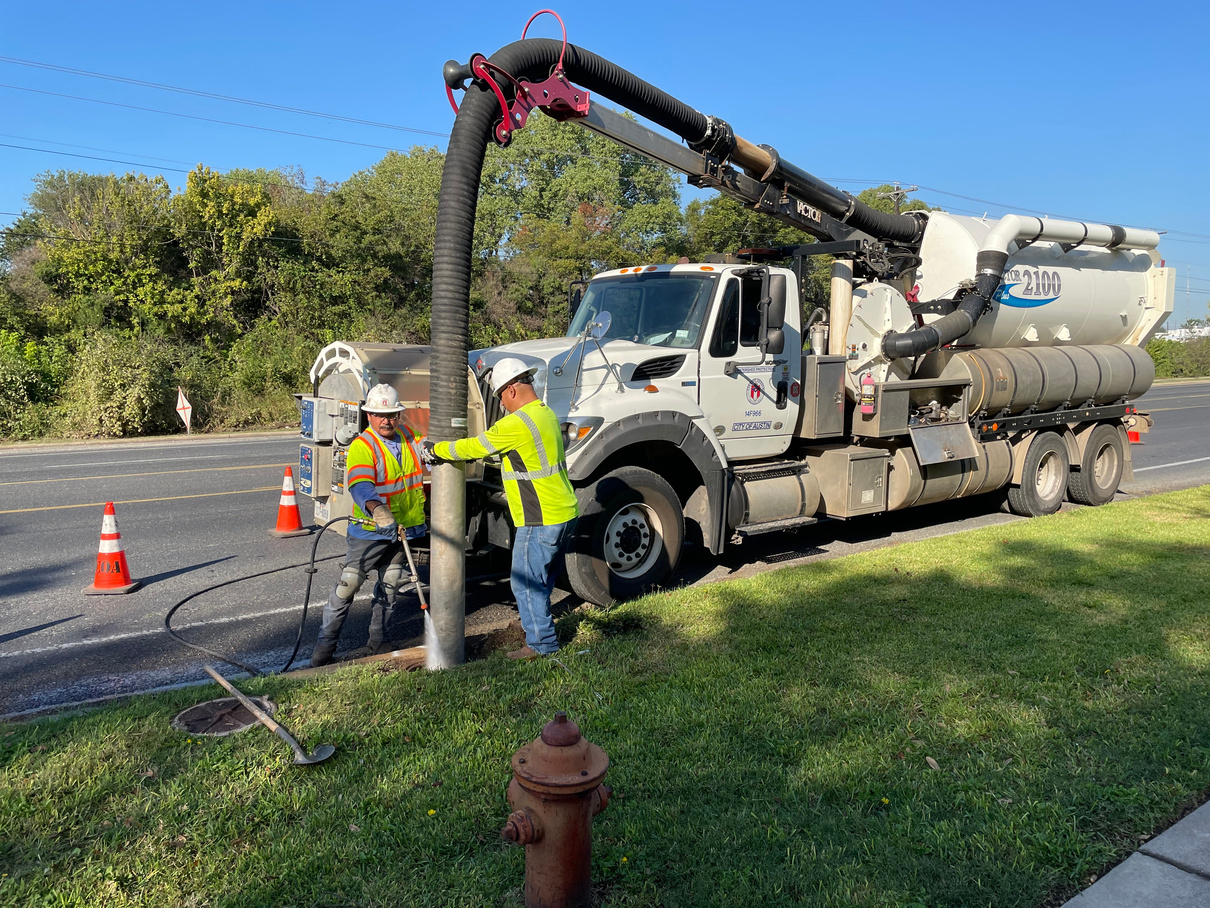
76,748
feet of pipeline cleaned to remove sediment, trash, and debris from our storm drain pipe system. This maintains the functionality of our pipes and reduces the amount of pollution that enters our creeks and river.
11.67
miles of pipeline inspected. Austin has a vast network of storm drain pipes, and we use cameras mounted on mini, remote-controlled vehicles to check the pipes’ condition.
76,748 feet is like driving from the Broken Spoke to the Domain!
Erosion
We investigate, prioritize, and regulate erosion issues to ensure public safety and protect vital resources. We employ stream stabilization techniques like reinforced earth banks, vegetation, and rocks to safeguard structures and public infrastructure from erosion, emphasizing the use of native materials to preserve the creek's natural environment.
Streambank Stabilization
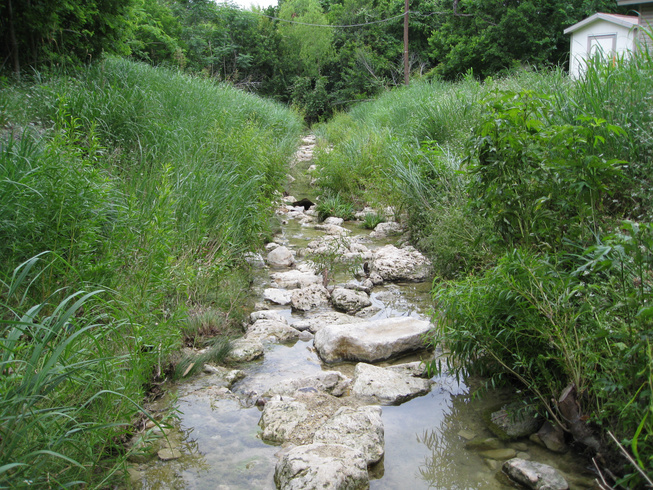
3,854
feet of eroding stream channels rehabilitated and stabilized, restoring the natural function of the stream
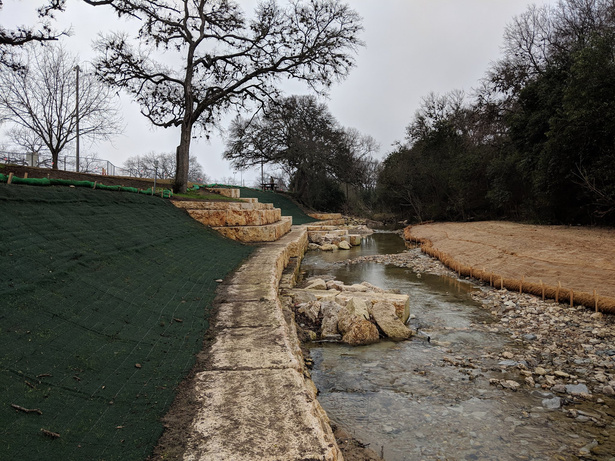
87,143
square feet (surface area) of unstable stream channel stabilized
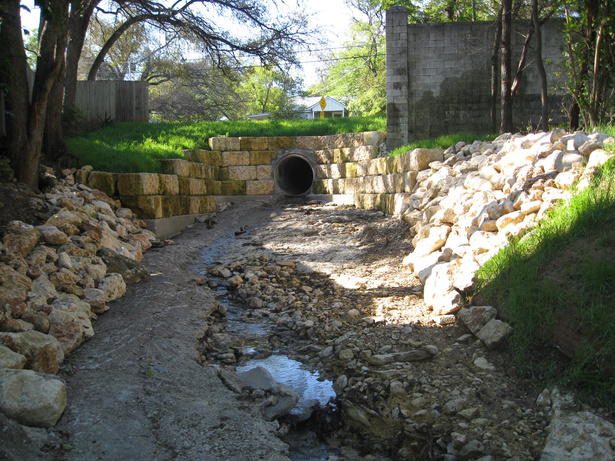
7,174
linear feet (length) of unstable stream channel stabilized
7,174 feet is like 191 MetroBuses lined up end to end!
This year, we completed
11 erosion projects
While each project differs in scope, they aim to:
- Prevent erosion
- Protect infrastructure
- Preserve ecosystems
- Reduce flood risks
- Improve water quality
Roy G. Guerrero Park Channel Stabilization
Various tasks have been ongoing to stabilize the streambank, such as adding soil, placing rocks to protect the channel, building concrete drop structures, and more.
Williamson Creek: Palo Blanco
Crews installed limestone block walls along the creek banks, restoring the damaged areas with native, shade-tolerant grass.
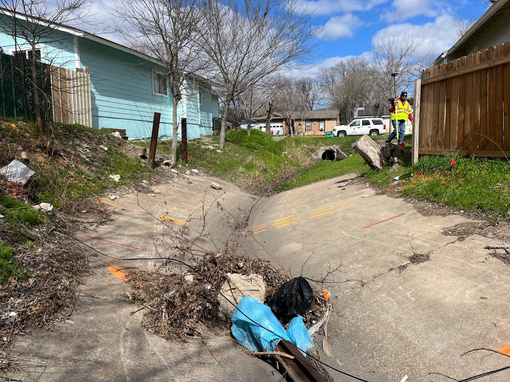
Before
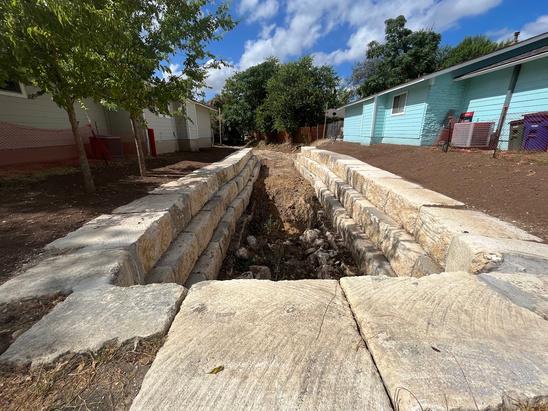
After
Williamson Creek: Whipple Way
Crews repaired a section of the retaining wall that was falling into the creek, causing a safety hazard and impeding the flow of water. They also fortified the channel bottom with rock to prevent future erosion and wall failure at other locations.
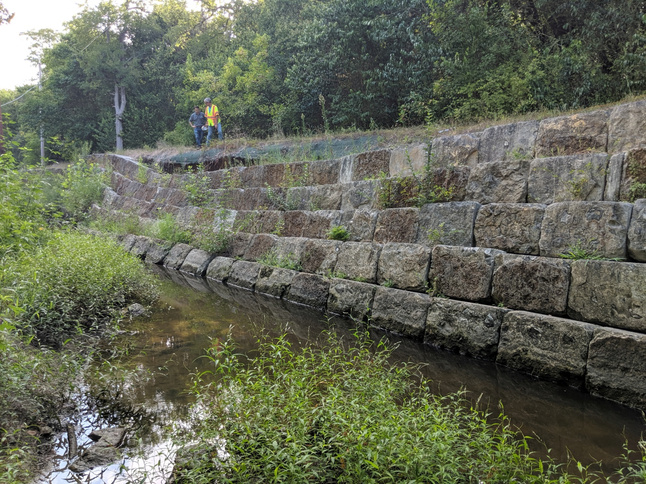
Before
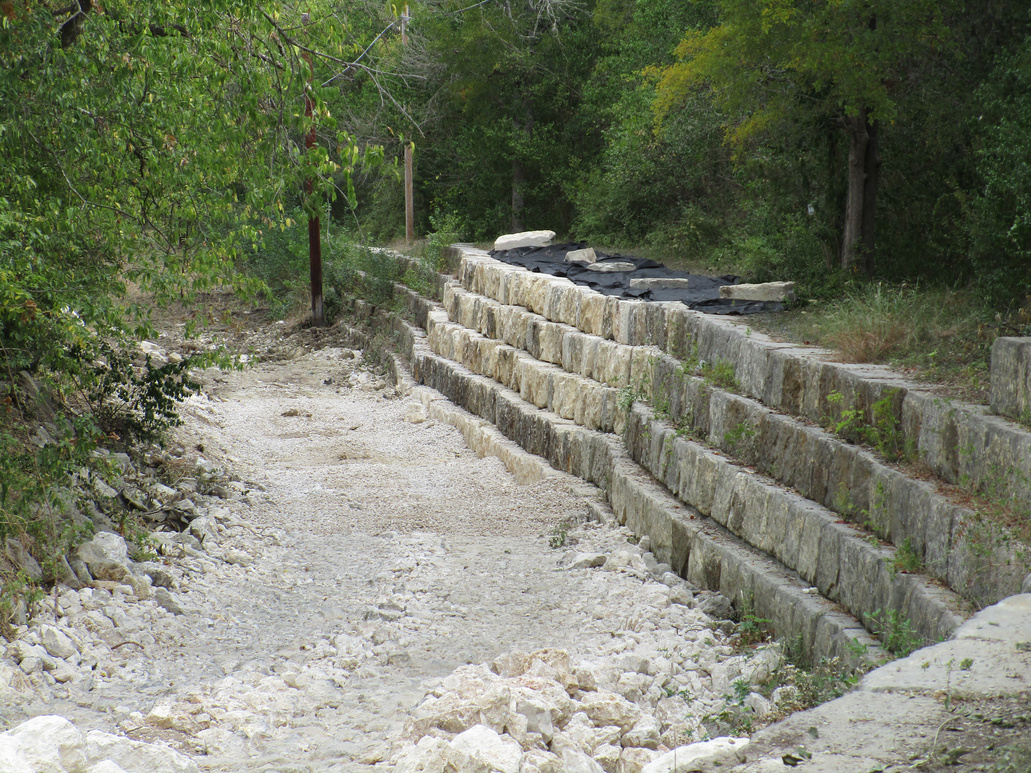
After
Water Quality
We safeguard Austin's waterways by protecting open space, managing stormwater, controlling pollution, and regulating runoff from new development. Together, these measures help preserve water quality despite a growing population.
Protecting Austin’s Environment
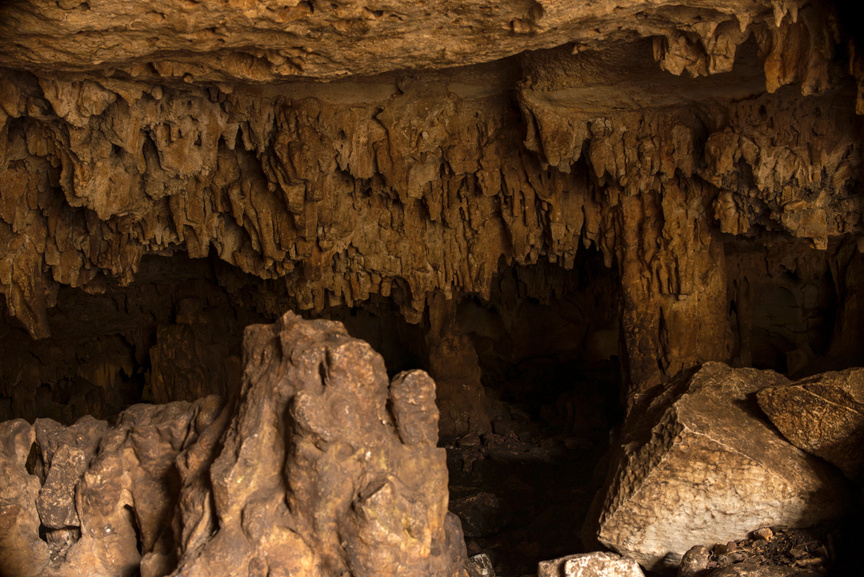
8,888
acres of Critical Environmental Features, such as wetlands and karst features, protected or improved
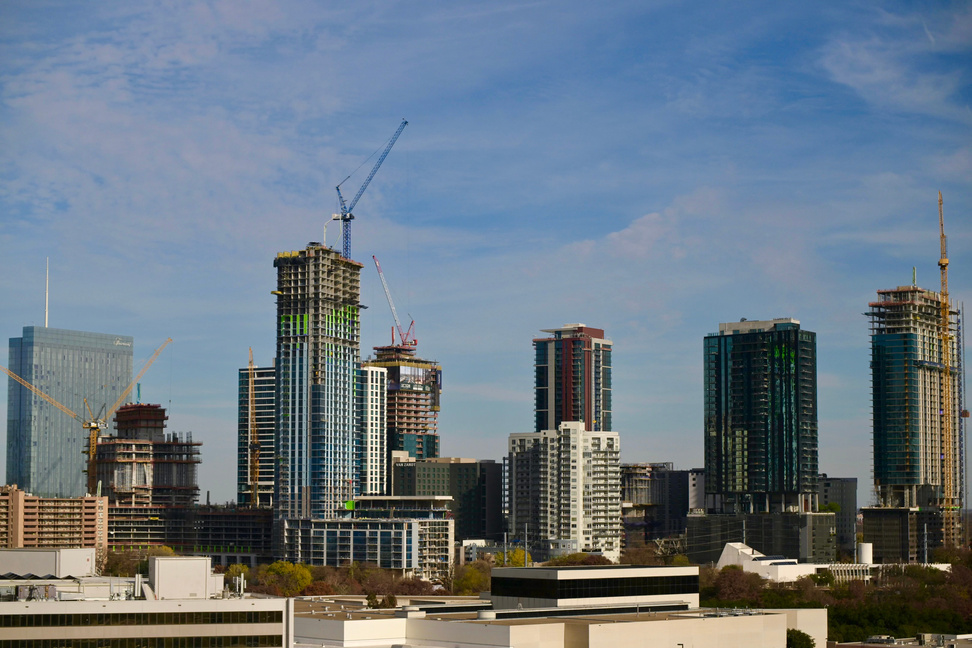
1,103
environmental policy and review cases completed, ensuring responsible development to protect Austin's environment
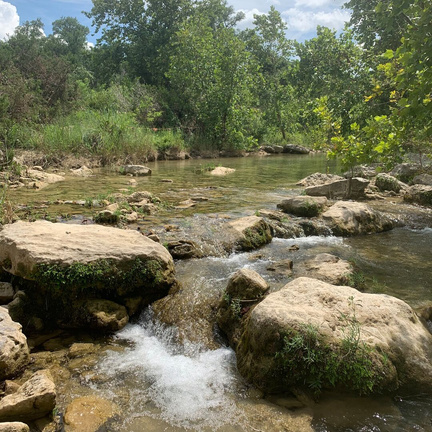
7,900
pounds of pollution prevented from entering the Barton Creek watershed since completing the Liberty Park Water Quality Pond Retrofits
7,900 pounds is nearly the same weight as 253,000 Mexican free-tailed bats!
26,600,000
gallons of pollution recovered from Austin’s environment by our spill response and inspection programs
918,000
pounds of pet waste potentially diverted from our streams and lakes as a result of our Scoop the Poop program
861
tons of pollution removed annually from stormwater runoff by City of Austin stormwater treatment facilities
1,400,000
gallons of stormwater diverted from storm drains by two raingardens and a sedimentation/biofiltration facility
91,695
visits to GrowGreen.org, promoting water quality and conservation through sustainable landscaping practices
91%
of our Habitat Conservation Plan Goals and Objectives were completed to keep Barton Springs Pool open. Because of the federally endangered status of the Barton Springs and Austin Blind salamanders, the City of Austin needs a permit from the U.S. Fish and Wildlife Service to operate Barton Springs as a recreation area. This permit, based on a Habitat Conservation Plan, covers actions in and around Barton Springs that may affect these salamanders.
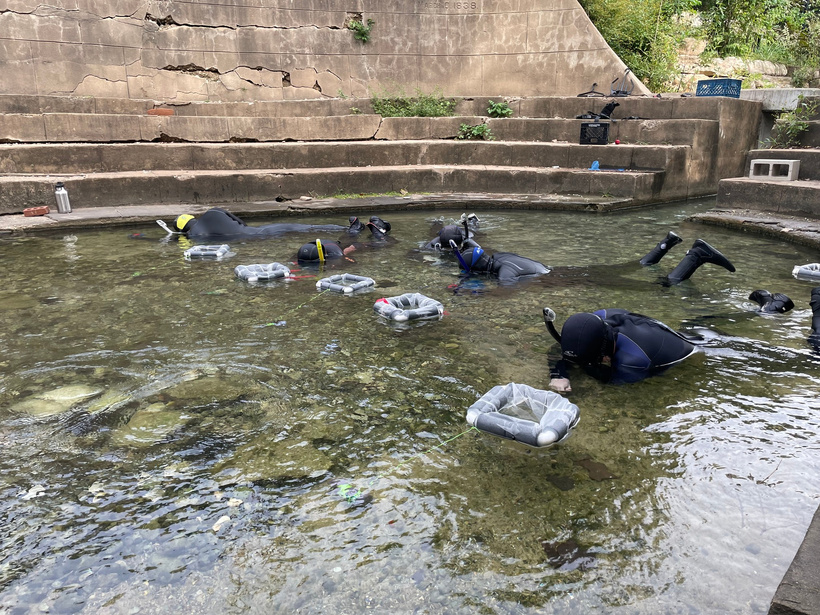

A Focus on Equity
To ensure lasting progress, the Equity and Inclusion Program engages staff in creating an inclusive environment where employees embrace and understand the significance of racial equity in their work.
120
employees participated in equity-related trainings
1
presentation to the Environmental Commission, highlighting ongoing equity efforts and collaboration
4
equity reviews focusing on time and attendance, records management, and land development
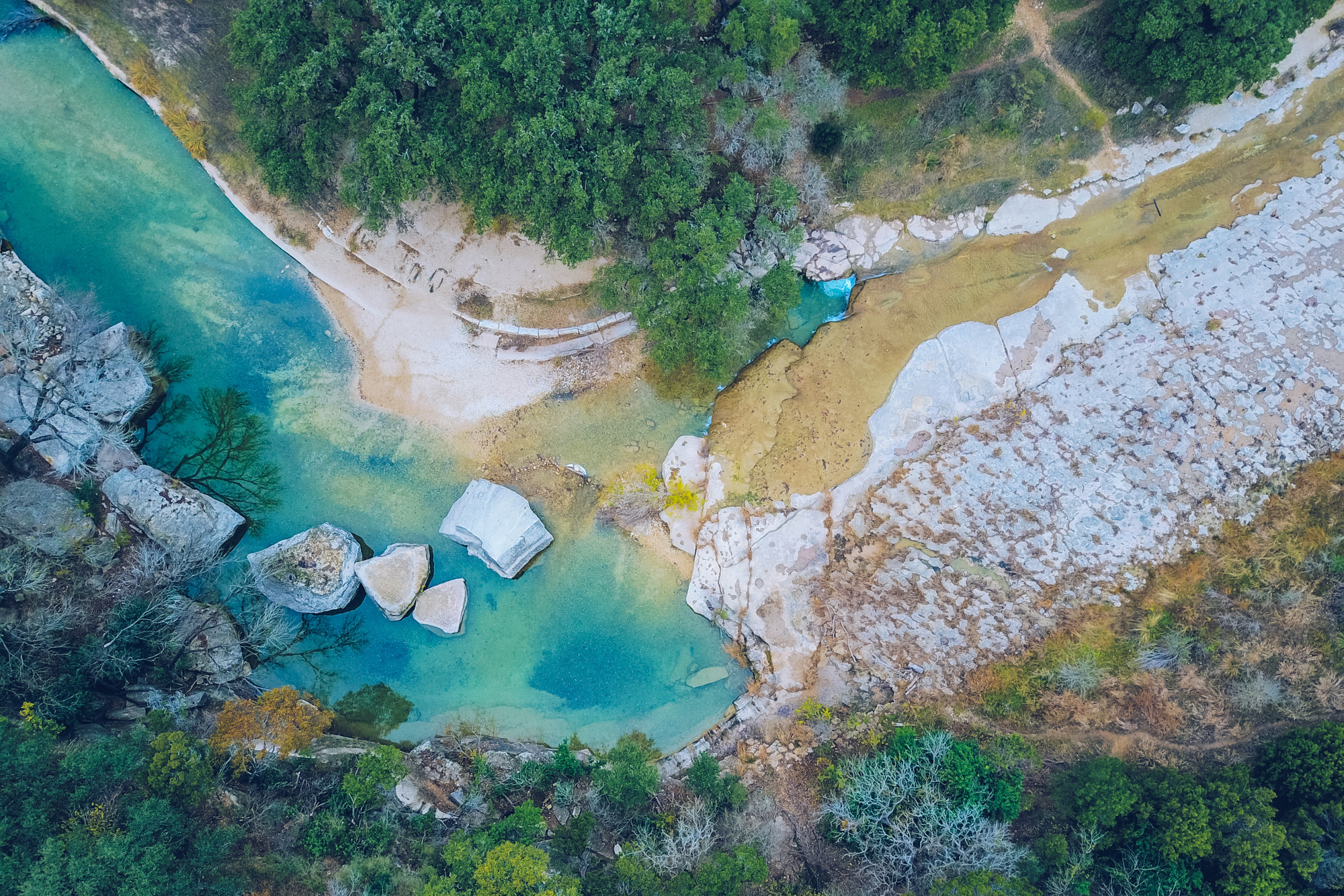

We have actively engaged with the Austin community, gathering their feedback on creeks, lakes, and flooding impacts. We are using this input to shape "Rain to River," our new 10-year strategic plan. With a commitment to equity and inclusivity, we have prioritized reaching out to communities that have historically been left out of City planning processes, using strategies such as:
- A Community Ambassador program
- Mini-grants to organizations
- Conducting focus groups with non-profit organizations, including MEASURE Austin, Art Spark, Austin Youth River Watch, and more
This ensures that our strategic plan reflects the diverse needs and priorities of all Austin residents.
AWARDS
- Lady Bird Lake - Canterbury at Mildred Emergency Street and Utility Repair: American Public Works Association’s Public Works Projects of the Year in Disaster or Emergency Repair
- Lady Bird Lake - Canterbury at Mildred Emergency Street and Utility Repair: American Council of Engineering Companies 2023 Engineering Excellence Awards
- Lazaro Cardenas, Drainage Operations and Maintenance Supervisor, 1st in the American Public Works Association National ROADeo Backhoe Competition
- Sarah Campbell, Conservation Program Coordinator, President's Award of Merit from the International Society of Arboriculture Texas Chapter
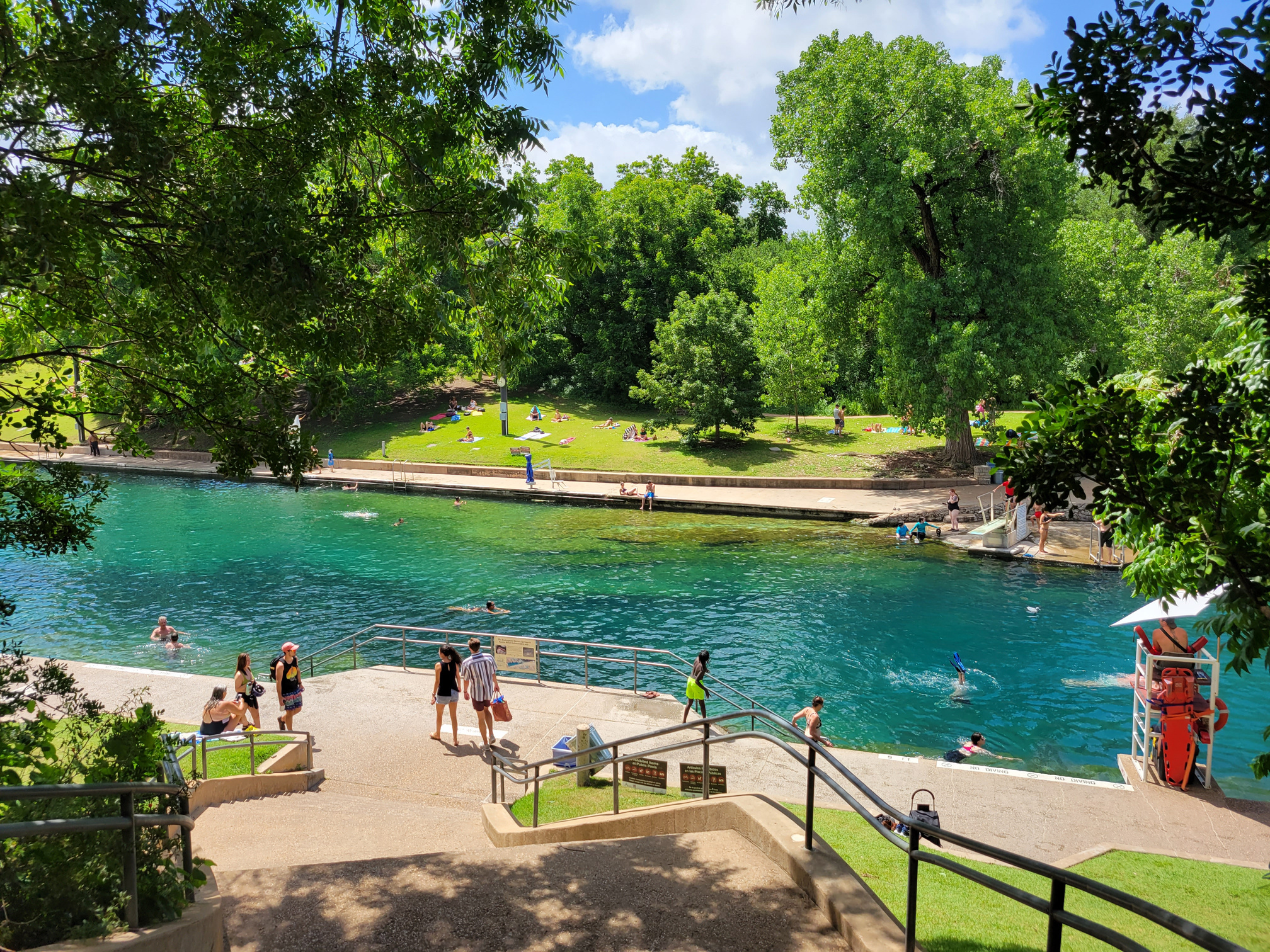
© 2023 City of Austin Watershed Protection Department. All Rights Reserved.
